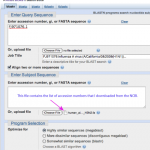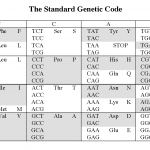swine flu
Nick's post on Amantadine resistance in swine flu was so interesting, I had to look at the protein structures myself.
I couldn't find any structures with the S31N mutation that Nick discussed, but I did find some structures with the M2 protein and Amantadine. Not only are these structures beautiful, but you can look at them and see how the protein works and how the drug prevents the protein from functioning.
As Nick mentions, the M2 protein from influenza makes a channel for hydrogen ions within the viral membrane. The channel controls the pH inside the virus by opening and closing.…
Laurie Garrett of the Council on Foreign Relations and a well-known authority on emerging infectious diseases was on PBS's Newshour last night and she made a very important but little appreciated point. Mexico has made a major national sacrifice for global public health by shutting down its country and interrupting transmission of disease. The cost to Mexico has already been enormous it will continue to pay in other ways. The reputation of the government has suffered because of the way it handled this -- the lack of transparency, the initial slow footedness (which of course it denies), its…
[NB: I have been traveling and offline all day. No way I can even read much less respond to the many excellent comments, tips, questions. Thanks to all. Help each other. Back at home base now.]
Closing US borders with Mexico for swine flu is fruitless since the virus is already planted in a dozen or more countries. And while right wing xenophobes are trying to blame Mexican immigrants, most of the international spread has come from commercial travelers, either tourists or business people. If we had sealed the borders, would it have included all American nationals in Mexico? Somehow I don't…
No more delays! BLAST away!
Time to blast. Let's see what it means for sequences to be similar.
First, we'll plan our experiment. When I think about digital biology experiments, I organize the steps in the following way:
A. Defining the question
B. Making the data sets
C. Analyzing the data sets
D. Interpreting the results
I'm going intersperse my results with a few instructions so you can repeat the things that I've done…
Just a brief note to remind everyone about the case definitions CDC is using for reporting on swine flu (or whatever name we collectively settle on). In order to make sure numbers are comparable from day to day and place to place we have to decide on criteria for knowing we have something to count. Is someone with flu-like symptoms to be counted as a case? Or do we confine it to someone with laboratory proved infection with the virus? Should there be different categories of diagnostic certainty?
For the moment, CDC is using the following definitions for suspected, probable and confirmed cases…
With the recent addition of Patricia Fitzgerald to The Huffington Post's editorial staff as "Wellness" editor, ScienceBloggers are ripping apart the medical articles pushed through to the public eye by HuffPo and Fitzgerald--whose biography states is a "licensed acupuncturist, certified clinical nutritionist, and a homeopath"--with all the force of a black hole. Writes ScienceBlogger PalMD, "In the fight for truth and honesty in journalism, I propose the following more accurate titles for the HuffPo medical writers who are commonly referred to as "Dr": Patricia Fitzgerald, Doctor of…
I have a handful of comments, mostly about how what you are seeing on the news is unimportant, and one comment about why you actually should worry. Within reason.
The new Swine Flu has now been verified in nineteen US states, with 141 cases. Technically there is 1 death, but since the young girl who died actually caught the flu in Mexico (and came to Texas for treatment) it is hard to say how that should be counted.
WHO characterizes the global spread of the flu as a "rapidly evolving" situation. As of an early morning update from WHO, the swine flu has been confirmed in Mexico (156…
Theme of the day (again, sort of): managing expectation, or Do I panic or just ignore this thing and scoff at those who express concern?
Neither, of course.
I'm personally provisionally encouraged at the aggregated news from yesterday -- meaning I was glad to see that though the virus is spreading, its pace doesn't seem to be wildly accelerating and, more important, there are some signs that it's not (at this point) horrifically virulent; some experts are saying it might not be much worse than a regular seasonal flu, and the warming weather is on our side.
Same time, it makes sense to take…
One of the things we are told is not the responsibility of government but an "individual responsibility" is not working sick or sending our kids to school when they are sick. I pointed out that the ability to do this may depend on others, particularly employers. Employers also have a responsibility, not just employees.
The US has some of the worst sick leave and child care policies among industrialized nations. It is nothing short of a scandal. And now these non-policies have the potential to have major public health consequences. The US labor movement is querying its workers about this. Here…
We'll have a blast, I promise! But there's one little thing we need to discuss first...
I want to explain why I'm going to use nucleotide sequences for the blast search. (I used protein the other day). It's not just because someone told me too, there is a solid rational reason for this.
The reason is the redundancy in the genetic code.
Okay, that probably didn't make any sense to those of you who didn't already know the answer. Here it is.
The picture above shows the human genetic code (there are at least 16 variations on this, but that's another story). Each middle cell in the…
There were 3 flu pandemics in the 20th century and each has gotten an unofficial name. 1918 was the Spanish flu, so named because the Spanish were the only ones honest enough to acknowledge its presence initially and thus got stuck with the blame. Like the other two pandemic viruses it probably originated in southern China (although its history is cloudy), so the nicknames of the 1957 (Asian flu) and 1968 (Hong Kong flu) are probably more apt, or at least less inapt. Now we have swine flu. Excuse me. I mean influenza A/H1N1, since that is how WHO is calling it so as not to impugn the good…
What's a good citizen to do if he or she thinks that cough and sneeze is swine flu? The Centers for Disease Control and Prevention recommends:
Stay home if you get sick. CDC recommends that you stay home from work or school and limit contact with others to keep from infecting them.
This afternoon I've been reading Nickel and Dimed: On Not Getting By in America by Barbara Ehrenreich - which is ever so more relevant now, if that were possible, than when it was originally released. Near the end she notes:
It is common, among the nonpoor, to think of poverty as a sustainable condition -…
A reader (hat tip, sandy) has pointed me to a very interesting interview with CDC's chief virologist, Ruben Donis, in Science Magazine's blog, ScienceInsider. In it he provides further information on the confusing reports about the species origin of the current swine flu, originally said to be of swine, human and bird origin but later claimed to be only swine. It may be that both are true, depending on how you look at it.
According to Donis, who has been sequencing the isolates, the virus is all recent swine but bears the marks of human and avian ancestry in some genes. Different genes have…
Last night, the phone rang at 9:22 pm. I quickly glanced at the caller ID. Hmmm. Why is the Seattle School district calling us at this time of night?
Apparently the swine flu has come to Seattle and the school district thought we should know.
Those messages are helpful if you're a parent, but they don't tell much about the rest of the world.
Health Map is a really wonderful, user-friendly, resource for following the epidemic.
When you get to Health Map , choose Select None to clear the map.
Then select Swine Flu.
You'll see a Google map with markers representing reports. The colors show…
In his morning news roundup at Slate today, Daniel Politi hits what seems to me -- this morning, anyway -- about the right tone, which is that the events of the last 24 hours are encouraging. (Though I wouldn't throw out those flu masks just yet.)
The New York Times points out that while the WHO urged calm, Chan "at times spoke as if a pandemic had already begun." Speaking to reporters, Chan said: "The biggest question right now is this: How severe will the pandemic be?" The Los Angeles Times is by far the most optimistic and points out that experts seem to be coming to the conclusion that,…
There is a tendency to be preoccupied with the latest in fast moving events, but I want to pause for a moment to make a point that has been lost in the discussion: we are witnessing a medical science landmark. Never before have we watched a flu outbreak of global dimensions unfold in real time. Nor have we ever had the opportunity to alter the course of such an outbreak.
I have been critical of WHO for being late to the party, but they are fully on board now and by raising the pandemic threat level to phase 5 have done something very important: served notice that it's time to mobilize…
Nature's Declan Butler looks at how baffled virologists are as they examine this virus's DNA:
Researchers are scrambling to study the evolution and spread of the novel H1N1 strain of swine influenza whose leap to humans was officially confirmed last week....
The genetic make-up of this swine flu virus is unlike any that researchers have seen. It is an H1N1 strain that combines a triple assortment first identified in 1998 â including human, swine and avian influenza â with two new pig H3N2 virus genes from Eurasia, themselves of recent human origin.
"It has been mixing all over the place,…
In June 2005 a reader over at the old site suggested we put up some of our flu related material on Wikipedia. That sounded like a great idea to me. Even better, why not start a special purpose wiki -- a flu wiki -- to harvest the vast knowledge of the hivemind? Many, if not most, of the problems that would plague us in a pandemic weren't medical or even scientific in nature. They were things like, how do you prepare your small business for the possibility that the one person who knows how to unjam the fax machine is out sick for 4 weeks? Two other bloggers were also doing flu stuff at that…
A student once complained that no horse was too dead for me to stop beating it. Long time readers are familiar with that here. Over the years I have said that the best way to prepare for a pandemic -- or any other grave threat to our communities -- is to strengthen its public health and social service infrastructures. While some progress along those lines have been made (the additional training and upgrading of the national laboratory system is what allows us to find swine flu cases), in the main public health and social services have continued to deteriorate and weaken. And with the day of…



